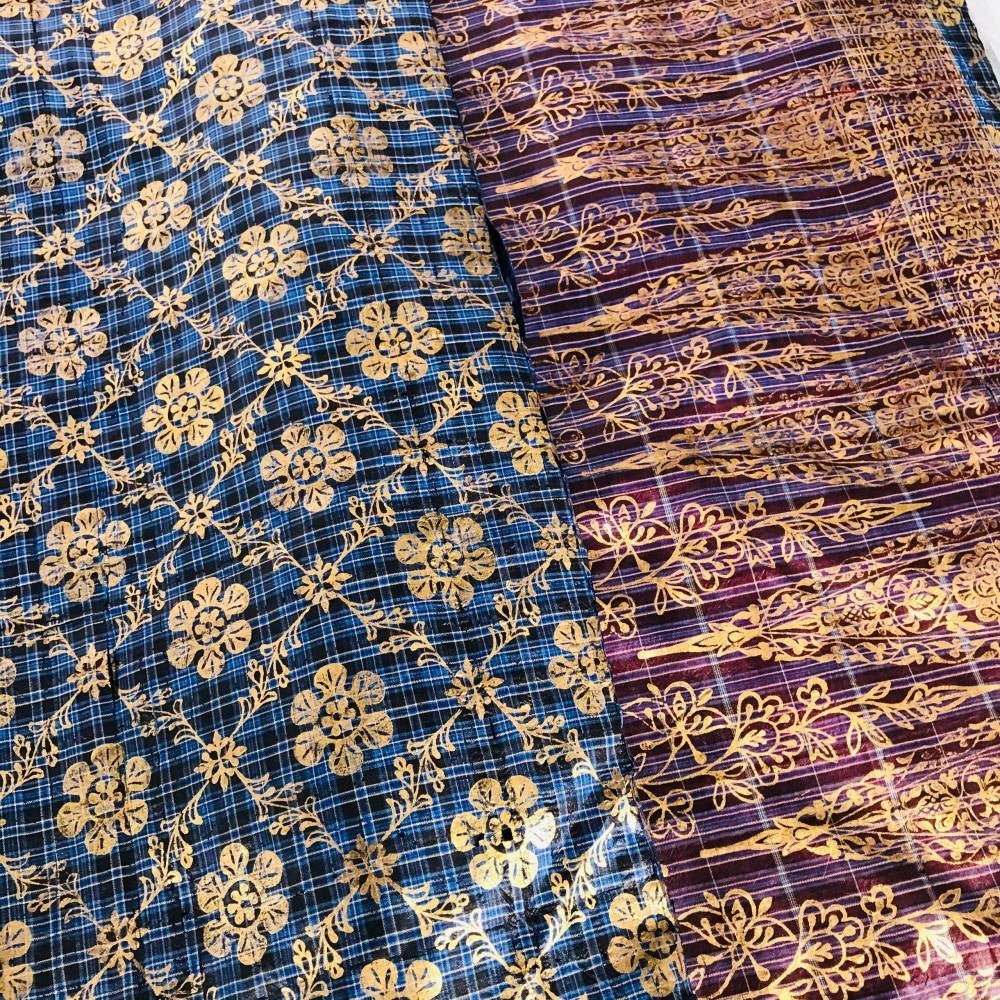All that glitters: A short history on the Malay art of textile gilding
SHAH ALAM - 'Seni Telepuk' or the art of textile gilding is a dying traditional Malay textile decorating technique, a unique art form that highlights the fineness of Malaysian craft.
The art form, which has been nearly forgotten, was supposed to have begun in the 17th or 18th centuries, when Bugis traders brought it from Celebes.
According to textile cultural researcher and advocate Khairulanwar Rahmat, gilding is the unique art of decorating fabric with a thin coating of gold in leaf or powder form.
"The telepuk textiles were considered the 'property of the palace' back in the day due to the textiles being decorated with real gold leaves and being usually worn by royalty or nobility. It is one of the rarest and most difficult textiles to create. The fabric was once worn by the sultans of Riau-Lingga, Johor, Selangor, Pahang, and Terengganu.

"The art involves the process of stamping a motif using a wooden block with a sticky paste onto the fabric before the shimmering gold leaf or dust is laid onto the sticky cotton or silk fabric to create a cloth adorned with gold leaf or tinsel.
"Usually, the gilt pattern is designed on a sarong that is worn as an outer garment for women or samping (a type of sarong worn on top of the trousers) for men, which can also be used as a headdress during a wedding ceremony.
"The gilt-patterned cloth, if worn properly, is very attractive because of its glittering golden appearance, giving the fabric and the wearer a unique look," he told Sinar Daily.

Khairul explained that the process of textile gilding was very unique as it required the artisan to master a number of skills and was very tedious.
"The artisan needs to be meticulous in the process of creating the fabric. Telepuk uses base cloth that is heavily starched. After removing the excess starch, the cloth is dried and covered with beeswax. Then, with the back of a Cowrie shell, it is rubbed until it shines—a calendering (or burnishing) technique known as 'menggerus kain’.
Once the surface is smooth and flat, small wooden blocks with carved patterns were coated with gum Arabic; the blocks are then stamped gently onto the cloth. Before the glue dries, a gold leaf is pressed on top of the patterns and when it's all dry, the fabric was burnished again with the cowrie shell," he said.

Gilding, according to old literature, referred to gold flowers and other ornaments. It is an art of decoding fabric, such as 'kain sarung benang halus' or kain Bugis, with a gold flower design covering. The cloth has a gold leaf applied to highlight a theme. Silver dust is sometimes used as well.
Khairul said there are over 30 telepuk patterns, each one inspired by blooming flowers and fruits such as persimmons and mangosteen.The stamp blocks are made using jackfruit and jelutong wood, known for their excellent workability.

The beauty of the telepuk has been described in many classical literature texts, among them Sejarah Melayu (The Malay Annals).
Early studies of Malay history and poems also often mentioned the fabric. He added that Malaysia was a country with a very unique textile identity and it was important to preserve our rich cultural heritage.
"Due to the impact of globalisation and modernisation in Malaysia, traditional Malay art was becoming irrelevant and unattractive to most Malaysians.
"Telepuk is one of the examples of traditional heritage that’s fading from Malay culture. This art form is facing extinction, unless necessary measures are taken to preserve it, education is one of the key pillars that can help the masses understand the historical significance of these textiles and why those techniques need to live on," Khairul said.















